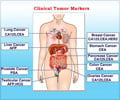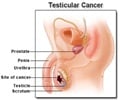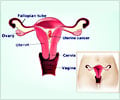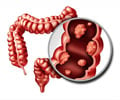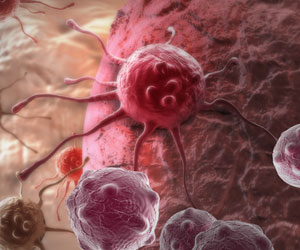Many cancer cells carry the seeds of their own destruction, researchers at the Stanford University School of Medicine have discovered.
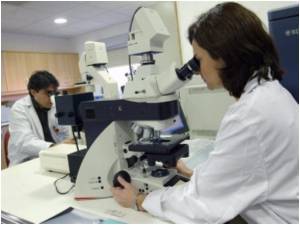
In the study to be published Dec. 22 in Science Translational Medicine, the researchers discovered that many forms of cancer display the protein calreticulin, or CRT, which invites immune cells called macrophages to engulf and destroy them. The reason most cancer cells are not destroyed by macrophages is that they also display another molecule, a "don't eat me" signal, called CD47, which counteracts the CRT signal.
The characterization of the function of CD47 protein in cancer was previously published by the Stanford scientists. In the earlier work, they reported that an antibody that blocks CD47 could be a potent anti-cancer therapy. They demonstrated that the anti-CD47 antibody could eliminate disease in mice transplanted with human acute myeloid leukemia and cure a large proportion of mice with human non-Hodgkin's lymphoma when combined with a second antibody.
Although the result was exciting, it presented a couple mysteries. "Many normal cells in the body have CD47, and yet those cells are not affected by the anti-CD47 antibody," said Mark Chao, a Stanford MD/PhD candidate who is first author of the new paper. "At that time, we knew that anti-CD47 antibody treatment selectively killed only cancer cells without being toxic to most normal cells, although we didn't know why."
The researchers also questioned whether simply blocking CD47 would be enough to bring on a cell's destruction. "It wouldn't be likely that killing cells was the default action of the immune system," said Ravindra Majeti, MD, PhD, assistant professor of hematology and co-principal investigator on the project. "We postulated that there had to be an 'eat me' signal that the cancer cells were also carrying in addition to CD47." CRT became the leading candidate for this signal because other researchers had previously shown that CRT and CD47 work together to govern a process of programmed cell death called apoptosis.
Indeed, when the scientists looked for CRT they found it on a variety of cancers, including several leukemias, non-Hodgkin's lymphoma and bladder, brain and ovarian cancers. "This research demonstrates that the reason that blocking the CD47 'don't eat me' signal works to kill cancer is that leukemias, lymphomas and many solid tumors also display a calreticulin 'eat me' signal," said Irving Weissman, MD, director of the Stanford Institute for Stem Cell Biology and Regenerative Medicine and the study's other co-principal investigator. "The research also shows that most normal cell populations don't display calreticulin and are therefore not depleted when we expose them to a blocking anti-CD47 antibody."
Advertisement
But it also raises new mysteries: Why would cancer cells carry a protein that invites their own destruction, and why would the worst cancers make more of this protein? One possibility is that CRT is a part of the cell's regulatory system that cancers have figured a way around. When normal cells become damaged, CRT protein gets exposed on the cell surface, which marks the cell to be eaten and ultimately destroyed. This is one of many ways the immune system keeps abnormal cells in check. "In cancer, CRT expression may be a marker of this process, requiring cancer cells to make more CD47 to avoid getting eaten," said Chao. "It's also possible that CRT confers some unknown advantage on cancer, which is an area we are actively investigating."
Advertisement
The scientists also want to learn more about the biology of CRT in cancer. "We want to know how it contributes to the disease process and what is happening in the cell that causes the protein to move to the cell surface," Majeti said. "Any of these mechanisms offer potential new ways to treat the disease by interfering with those processes."
Source-Eurekalert

